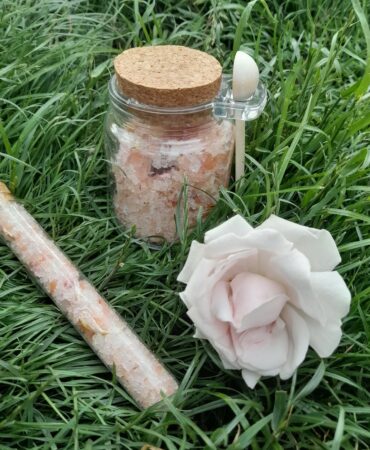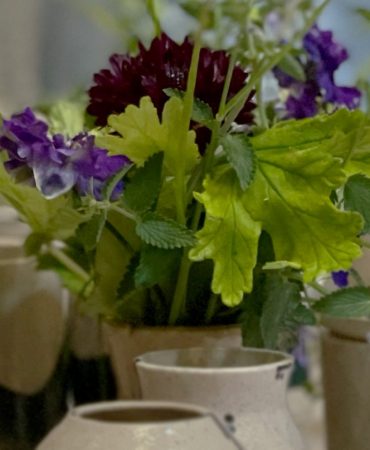Currently Empty: £0.00

🌿🌹Sending Love Everyday With Herbs
It’s the end of Valentine’s day. Smothering’s of love and affection have been had, meaning more to us today than perhaps they have in previous years, as we are distanced from those we love. The two most typical gifts to give and receive on this day, are of course red roses and chocolates. Often given together, they are a symbol of modern-day romance. This association, of red roses with feelings of passion and true love, became widespread in England during the Victorian era.
The Victorian era saw an explosion of love for plants, linked to the obsession the Victorians had with places and people they saw as ‘exotic’. Plants quickly became a point of competition as collectors raced to build the largest gardens with the most exquisite, rare and of course, exotic specimens.
Plants became the cultural goods that they are today but were consumed even more intensely. Flowers, herbs and plants gained their own language, floriography. Classed as a cryptological language, floriography was used by Victorians to send secret messages that could not be spoken aloud due to Victorian conservatism. Flowers would be matched with meanings, to reveal a sentiment or feeling, and the meaning of a flower could change based on variety and quantity.
There was a multiplicity of publications each giving a dictionary of meanings and interpretations, and each a little differently, which made attempts to crack the cryptic message a challenge. Thus, in the Victorian era, it is thought that the language of flowers was more a means of entertainment for gentile women, then a productive method of communication.
Ultimately, there was no definitive list of meanings for decipherers to use. And this is, in fact the case universally. The practice of associating plants with meanings is ubiquitous throughout history and across the world’s entire geography, but there has never been a single set of universally agreed-upon meanings. However, this was not the notion put forward by editors and writers during the Victorian period. Some went so far as to say that flowers and leaves had intrinsic meanings, though the most popular narrative was that there had been a standard set of symbolisms throughout history.
The fad that floriography became marks a move of plants from subjects of botanical and scientific interest, to one of sentimental, cultural interest. As Richard Mabey notes, in The Cabaret of Plants, the meaning given to flowers and herbs like red roses, typically had nothing to do with the plants themselves, but were purely arbitrary, and they were mostly concerned with the subject of love [pp. 7].
What other herbs can you use to send a message of love?
According to Victorian publications, the following herbs mean love:
Basil – good or best wishes, love, also hatred and animosity
Bugle – lovable
Forget-Me-Not – remembrance, true love
Honeysuckle – bonds of love
Lemon Balm – love, understanding, sex, sympathy
Myrtle – fidelity, marriage, passion, true love,
Violet – returned love
Though this list isn’t exhaustive, unfortunately none of these are in bloom or at their best in February and that goes for red roses too. The majority of both the roses and chocolate bought at this time of year stem from Africa and South America, are raised out of season and take long journeys to get here. Some more sustainable alternatives being emphasised this year, are house or potted plants to replace cut flowers and heart shaped ice-hangings, where you freeze foraged leaves, berries and messages in water, along with some string, and then hang them from a branch.
Anything seasonal, is usually more sustainable and if you wanted to create bouquets including herbs, there are a number of evergreens which would do the trick (as seasonal stems though, not as Victorian emblems for love). Rosemary and sage are both good fragrant options. Then there’s thyme and parsley too if yours has lasted (not an evergreen but can be over wintered).
Parsley – festivity, gratitude
Rosemary – remembrance
Sage – domestic virtue, wisdom
Thyme – activity, courage
All in all, the Victorian practice of floriography is a fascinating moment in the history of associating plants with meanings. It marks a moment of change, and prompts us to think about our relationship with and consumption of the natural world today. New and old associations of flowers and meanings are being made and used all the time, within art, poetry, performance, social movements (like the self-love movement), and, with the use of emojis.
🌸 Cherry blossom – beauty , love, Mother’s day, Valentine’s day
🌿 Herb – various content: cooking, general plant life, herbal medicine
🌷 Pink tulip – appreciation, happiness, love, Mother’s day, spring, The Netherlands, Valentine’s day
🌹 Rose – love, Mother’s Day, romance, Valentine’s day
🌻 Sunflower – happiness, Mother’s Day
🥀 Wilted flower/dead flower/wilted rose – irony, heartbreak, sadness




